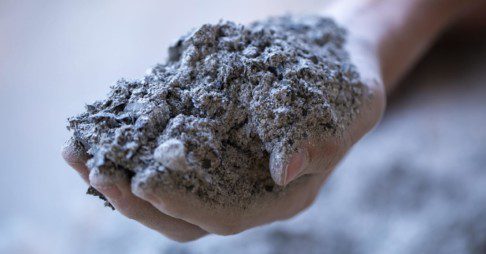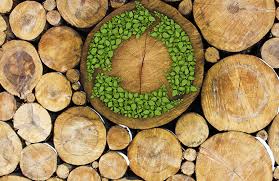Fly Ash Complete Management Guide
Fly ash is a byproduct of burning coal in thermal power plants, which can have negative environmental and health impacts if not managed properly. Proper management of fly ash is crucial for the sustainable development of any country. This article will discuss the importance of managing fly ash properly.
Firstly, improper management of fly ash can lead to environmental degradation. When fly ash is not disposed of properly, it can contaminate soil and water bodies. This can have severe impacts on the surrounding ecosystem and wildlife, as well as pose a threat to human health. The contamination of soil and water bodies with fly ash can also lead to the loss of biodiversity and ecosystem services, which are essential for human survival.
Secondly, fly ash can be used as a resource if managed properly. Fly ash is a valuable raw material that can be used in the production of cement, bricks, and other construction materials. By using fly ash as a resource, the need for mining raw materials can be reduced, thus reducing the impact on the environment.
Thirdly, proper management of fly ash can lead to cost savings for power plants. By implementing proper fly ash management practices, power plants can reduce the amount of ash that needs to be disposed of, thus reducing disposal costs. Additionally, the reuse of fly ash as a resource can generate revenue for power plants, thus increasing their profitability.
Fourthly, proper management of fly ash can also lead to the creation of employment opportunities. The reuse of fly ash as a resource requires skilled labor, which can create employment opportunities in the construction industry. This can have a positive impact on the local economy and contribute to the overall development of the country.
The proper management of fly ash is crucial for the sustainable development of any country. Improper management can lead to environmental degradation, loss of biodiversity and ecosystem services, and pose a threat to human health.
On the other hand, proper management can lead to the creation of employment opportunities, cost savings for power plants, and the conservation of natural resources. Therefore, it is important for governments and industries to implement proper fly ash management practices to ensure a sustainable future.
Ways To Manage Fly Ash Properly

(1) Utilization
Fly ash can be used in various ways such as cement production, concrete mixture, road construction, and agriculture. This reduces the amount of fly ash that needs to be stored or disposed of. Fly ash is a byproduct of coal combustion that contains various materials, including alumina, silica, and unburned carbon.
Due to its composition, fly ash has been utilized for various applications, including construction materials, soil stabilization, and agriculture. In this article, we will discuss the utilization of fly ash in more detail.
Fly ash has been used as a partial replacement for Portland cement in the production of concrete. The use of fly ash in concrete production can enhance the strength and durability of the concrete while reducing the amount of Portland cement required. This is due to the pozzolanic properties of fly ash, which react with calcium hydroxide in the presence of water to form additional cementitious materials.
Fly ash has also been used in the production of bricks, blocks, and other masonry units. The use of fly ash in masonry units can improve the compressive strength and reduce the cost of production. Fly ash can also be used as a filler material in asphalt concrete and as a component in the production of lightweight aggregates.
Fly ash can be used as a soil stabilizer due to its ability to reduce the plasticity and increase the shear strength of the soil. This is especially useful in areas with soft, expansive soils that are prone to settlement and erosion. The use of fly ash in soil stabilization can improve the load-bearing capacity of the soil and reduce the need for traditional stabilization methods such as lime and cement.
Fly ash can also be utilized in agriculture as a soil amendment and fertilizer. Fly ash contains various nutrients, including potassium, calcium, and magnesium, which can benefit plant growth. Additionally, the high alkalinity of fly ash can neutralize acidic soils and improve soil structure.
Fly ash is a versatile material that can be utilized in various applications. Its use in construction materials can improve the strength and durability of concrete and reduce the cost of production.
The use of fly ash in soil stabilization can improve the load-bearing capacity of soil and reduce the need for traditional stabilization methods. Finally, fly ash can be used in agriculture as a soil amendment and fertilizer. With its numerous benefits, fly ash is an attractive alternative to traditional materials and methods.
Read Also: Slag Complete Management Guide
(2) Landfills
Fly ash can be disposed of in a landfill designed specifically for this purpose. The landfill should have a liner system to prevent leachate from contaminating the surrounding environment. Landfills are an essential component of modern waste management systems, serving as a repository for various types of solid waste generated by human activities.
One particular waste stream that has been gaining attention in recent years is fly ash, a byproduct of coal combustion that is often disposed of in landfills. Landfills from fly ash pose unique challenges due to their physical and chemical properties, as well as their potential impact on the environment and human health.
Fly ash is primarily composed of fine particles of inorganic matter, such as silica, alumina, and calcium oxide, which can pose a risk to human health and the environment if not properly managed. When disposed of in landfills, fly ash can leach harmful chemicals and heavy metals into the surrounding soil and groundwater, potentially contaminating nearby ecosystems and posing a risk to public health.
To address these challenges, several strategies have been developed to ensure the safe disposal of fly ash in landfills. One approach is to use engineered landfills, which are specially designed to contain and isolate hazardous wastes from the environment. These landfills typically feature multiple layers of impermeable materials, such as clay and plastic liners, to prevent the migration of pollutants into the surrounding soil and groundwater.
Another approach is to utilize innovative technologies to transform fly ash into more environmentally friendly materials, such as concrete or bricks. These methods not only reduce the volume of waste sent to landfills but also create valuable products that can be used in construction and other applications.
In addition to these technical solutions, effective management practices are critical to ensure the safe disposal of fly ash in landfills. This includes regular monitoring of the landfill environment, proper storage and handling procedures, and comprehensive risk assessments to identify potential hazards and inform mitigation strategies.
Landfills from fly ash present significant challenges for waste management professionals, requiring careful planning, innovative technologies, and robust management practices to ensure the protection of public health and the environment. By addressing these challenges head-on, we can work towards a more sustainable and responsible approach to waste management that minimizes the impact of our waste on the world around us.
(3) Encapsulation
Fly ash can be encapsulated by mixing it with cement or other materials to prevent it from leaching into the environment. This can be done on-site or off-site. Encapsulation of fly ash refers to the process of confining fly ash within a material to prevent its release into the environment.
Fly ash is a byproduct of burning coal or other fossil fuels in power plants, and if not properly managed, it can lead to air and water pollution. Encapsulation is a widely accepted method of managing fly ash, as it can reduce the risk of contamination and protect human health and the environment.
The process of encapsulation involves mixing the fly ash with a binding material, such as cement or polymer, to form a solid block or particle. The encapsulated fly ash is then stored in a landfill or used in construction materials, such as concrete, where it can be safely contained.
The use of encapsulation in fly ash management has several advantages. Firstly, it reduces the potential for environmental contamination by preventing the release of the fly ash into the air or water. Secondly, encapsulated fly ash can be used as a building material, which reduces the amount of waste generated and provides a useful resource for construction projects.
However, there are also some limitations to the use of encapsulation. The cost of encapsulation can be high, especially for large volumes of fly ash. There are also concerns about the long-term durability of encapsulated materials, as they may degrade over time and release the fly ash.
To address these concerns, ongoing research is being conducted to improve the efficiency and effectiveness of encapsulation methods. This includes the development of new binding materials and techniques, as well as the testing and monitoring of encapsulated materials to ensure their long-term stability.
The encapsulation of fly ash is a proven method of managing this byproduct of coal combustion. While there are some limitations to its use, continued research and innovation in this area can help to overcome these challenges and ensure that fly ash is managed in a safe and sustainable way.
Read Also: Industrial Wastes Complete Management Guide
(4) Recycling
Fly ash can be recycled into useful products such as bricks, tiles, and synthetic aggregate. This reduces the need for virgin materials and reduces the amount of fly ash that needs to be stored or disposed of. Fly ash is a byproduct generated during the combustion of pulverized coal in thermal power plants.
It is a fine powder consisting of inorganic materials such as silica, alumina, iron, and calcium, among others. In the past, fly ash was primarily disposed of in landfills, which led to environmental concerns due to its potential impact on water and soil quality. However, in recent years, recycling of fly ash has gained momentum as a sustainable and eco-friendly solution.
Recycling of fly ash involves utilizing the material in various applications, including the construction industry, agriculture, and manufacturing. One of the primary uses of fly ash is in the production of cement and concrete.
The addition of fly ash in concrete increases its durability, strength, and workability, making it an attractive alternative to traditional cement-based concrete. Fly ash can also be used in the manufacturing of bricks, ceramics, and glass products, among others, due to its high silica content.
In agriculture, fly ash can be used as a soil amendment to improve fertility and plant growth. The alkaline properties of fly ash help to neutralize acidic soils, while its mineral content enhances soil structure and moisture retention. Additionally, fly ash has been shown to reduce heavy metal uptake in plants, which can be beneficial for food safety.
The recycling of fly ash also has the potential to reduce greenhouse gas emissions. By using fly ash as a replacement for cement, the amount of CO2 emissions produced during cement production can be significantly reduced. Furthermore, the use of fly ash in construction materials can lead to energy savings due to its insulating properties, reducing the need for heating and cooling.
The recycling of fly ash is a sustainable and eco-friendly solution that provides numerous benefits. Its utilization in the construction industry, agriculture, and manufacturing can reduce environmental impacts while improving product performance. As such, further research and investment in the recycling of fly ash should be encouraged to ensure a more sustainable future.
(5) Wet disposal
Fly ash can be mixed with water to form a slurry that can be pumped to a storage pond. The storage pond should have a liner system to prevent leachate from contaminating the surrounding environment. Wet disposal of fly ash is a common method of managing the waste generated from coal-fired power plants. This method involves the use of a slurry mixture of water and fly ash, which is then pumped into specially designed containment structures, such as ash ponds or landfills.
The primary advantage of wet disposal is that it provides a cost-effective solution for the large volumes of ash produced by power plants. In addition, it reduces the amount of dust and air pollution that would result from the dry disposal of fly ash. The use of water in the mixture also helps to stabilize the ash and reduce the risk of environmental contamination.
However, wet disposal does have its challenges. The containment structures used for storing the ash must be carefully designed and maintained to prevent leakage and ensure structural integrity. In addition, the management of the water used in the mixture can be complex, particularly in regions where water is scarce.
To address these challenges, there are a number of best practices that can be employed in wet disposal of fly ash. These include:
Proper design and maintenance of the containment structures: This includes the use of liners to prevent leakage, regular inspections and maintenance, and appropriate monitoring systems to detect any issues.
Management of water resources: The use of recycled or treated water can help to reduce the demand on freshwater resources. In addition, the development of water management plans can help to ensure that the water used in the mixture is used efficiently and effectively.
Collaboration with local stakeholders: Engaging with local communities and stakeholders can help to build trust and support for the management of fly ash. This can include consultation on the location and design of containment structures, as well as ongoing communication about monitoring and management activities.
Wet disposal of fly ash is a valuable method for managing the waste generated by coal-fired power plants. By employing best practices and working closely with local stakeholders, it is possible to ensure that this method is safe, effective, and sustainable over the long term. It is important to manage fly ash properly to prevent environmental contamination and protect public health. The best approach will depend on the specific circumstances and the available resources.
Read Also: Celebrate Your Birthday in Style with These Starbucks Drinks


